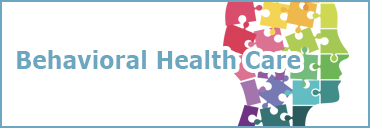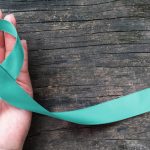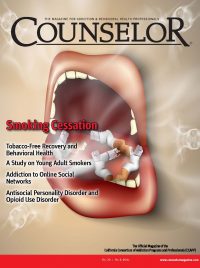Share

Nearly 8 percent of the US population met criteria for a substance use disorder (SUD) according to a recent survey by the Substance Abuse and Mental Health Services Administration (SAMSHA; SAMHSA, 2019). SUDs are associated with increased risk of problems for affected individuals and their family systems and members, including children (Daley & Douaihy, 2019; Daley & Tarter, 2017). This article discusses the impact of SUDs on children as well as children’s protective factors and resilience. We provide suggestions on how practitioners may help children and families affected by loved ones’ SUDs.
The Effects of SUDs on the Family System
SUDs not only disrupt the health, psychological, and social well-being of affected people, but also frequently disrupt these processes in their family members. One adverse effect is on quality of child rearing (Suchman, Pajulo, & Mayes, 2013). Severe SUDs jeopardize children’s safety and may necessitate placement in foster care, protective custody, or relocation to relatives. Also, SUDs impede consolidating an emotional bond with children integral to effective fair discipline, respected mentoring, and communication. In older children, SUDs in a parent (or parents) may fracture the parent-child relationship, especially after divorce and incarceration. Even when families remain intact, the quality of interactions are often clouded by conflict and laden with stress. The family as a harmonious cohesive system no longer exists. Additionally, financial insecurity and the descent into homelessness and poverty are not uncommon for some families.
Factors Determining How Children Are Affected by Parental SUDs
Not all children in families are affected the same way by parents with SUDs because all children are unique with respect to genetic makeup, psychological disposition, and quality of relationship with parents (Daley & Douaihy, 2019). Characteristics of parents influencing children’s risk for SUDs are:
- Age of onset of substance use and severity of SUD
- Severity of psychiatric and medical disorders that impede caregiving
- Quality of relationship between the parents in which one or both are SUD affected
- Health of mother during pregnancy
- Availabilty of emotional support, social skills, and coping resources that promote effective parenting
- Effective guidance from parents pertaining to achieving academic goals, normative socialization, and instilling healthy values and behaviors
- Traumatic reactions consequent to parental incarceration, death (e.g. overdose, accident, suicide) or medical complications
- Capacity to provide oversight and supervision of children (weak parental oversight provides the opportunity for children to join gangs or form friendships with peers that promote socially non-normative activities including school truancy, petty crime, precocious sexual activity, and substance use)
These factors in parents with SUDs amplify their children’s risk for SUDs, though the majority of children of SUD-affected parents do not develop a SUD.
How Children Experience Their Parents’ SUDs
Children whose biological parents have SUDs are at heightened risk to develop SUDs, along with medical problems and psychiatric disorders, even if raised by non-SUD-affected parents. Conversely, children raised by non-biological parents who have SUDs are also at increased risk for SUDs. Women who use addictive drugs during pregnancy confer additional risk on the developing fetus due to substance toxicity, co-occurring poor nutrition, medical complications, and long-term stress (Suchman et al., 2013; Behnke, Smith, Committee on Substance Abuse, Committee on Fetus and Newborn, 2013).
Difficult temperament in early childhood that later takes the clinical form of attention deficit hyperactivity disorder (ADHD) and conduct disorder are frequent indicators of future SUDs (Tarter & Reynolds, 2017; Tarter & Horner, 2016). During adolescence and adulthood, antisocial personality disorder (more prevalent in males) and borderline personality disorder (more frequent in females) are strong indicators of risk.
All these disorders share some important features, especially less capacity to exercise cognitive control over emotions and behavior (Kirisci et al., 2015). Cognitive deficits also include distractibility, poor foresight, low persistence to goals, making risky decisions, and poor concentration. These impairments jeopardize academic performance that in turn may lead to social maladjustment. Problem behaviors such as overactivity, restlessness, impulsivity, thrill seeking, and aggressiveness—all of which may reflect poor self-regulation—may result from suboptimal cognitive control. Deficient modulation of emotions can show as irritability, anger, depression, and anxiety. Failure to adequately self-manage emotions and behavior often leads to social maladjustment and low self-esteem.
SUDs not only disrupt the health, psychological, and social well-being of affected people, but also frequently disrupt these processes in their family members.
In global terms, behavior undercontrol, emotional instability, and poor cognitive control comprise a disposition indicative of poor psychological self-regulation. This disposition is more frequent and pronounced in children of SUD-affected parents. It predisposes these children to conflicts with adults and rejection by peers, leading to forming friendships with youths who are similarly psychologically dysregulated. The members of this friendship cluster mutually reinforce socially non-normative or deviant behaviors, including substance use. Truancy from school, sexual activity, and/or risky or thrill-seeking behaviors further promote a trajectory toward adverse health, psychological, and social outcomes. The likelihood of these outcomes is especially pronounced where the SUD-affected parent or parents cannot or choose not to provide adequate supervision. In the absence of a strong parent-child bond accompanied by good communication, children are prone to disengage from their families and become more closely involved with peers who violate social norms and laws, oftentimes engaging in alcohol and drug use.
Protective Factors and Resilience in Children
In some children, adversity associated with living with a SUD-affected parent does not inevitably have profound or lasting negative impact. Many children are resilient, particularly if they have good psychological self-regulation, prosocial values, and commitment to health behaviors (e.g., exercise, dental health, etc.). Also, social skills, especially the capacity to resist peer pressure to use substances, are protective. These risk-lowering factors can be acquired from family members, schools, churches, and communities. Parents can be a critical influence on promoting healthy, socially adjusted outcomes in their children, even if they have SUDs.
Interventions by Practitioners
Behavioral health or medical practitioners can help families and children affected by parental SUDs even if they do not specialize in the treatment of SUDs (Committee on Substance Abuse, Levy, & Kokotailo, 2011). One of the best ways to help is to facilitate engagement in treatment for parents with SUDs. The most recent national survey indicates that 22.3 million Americans (9.1 percent) have resolved an alcohol or drug misuse problem or a SUD (Kelly, Bergman, Hoeppner, Vilsaint, & White, 2017). This and other surveys of individuals in recovery in multiple countries underscore the high prevalence, wide scope, and deep penetration of addictive drugs in contemporary society while also providing optimism that there are multiple pathways to recovery from this chronic, life-threatening disease (Daley, 2019; Laudet, 2013). As a result, many individuals and family members improve, including children.
At the outset, it is important to become knowledgeable about SUDs as a family disease. Practitioners can help parents with SUDs get connected with treatment and/or recovery resources to address their problems. Parents may also be referred to programs that focus on improving their parenting skills. Medication treatment of alcohol, opioid, or tobacco addiction can be initiated by medical practitioners, or patients can be referred to clinics or practitioners that can provide medications, other treatments, psychosocial services, or mutual-aid programs that support recovery. Pregnant and addicted mothers can be treated to minimize the adverse effects on the fetus and newborn, and/or connected to specialized addiction treatment programs. When parents with SUDs improve as a result of treatment, the entire family benefits.
Children of SUD-affected parents benefit from risk screening, brief intervention, and referral to prevention or treatment services (Calhoun, Conner, Miller, & Messina, 2015). Youths should also be screened for substance use and potential problems as recommended by the American Academy of Pediatrics, which is shown to be cost-efficient and feasible (Committee on Substance Abuse et al., 2011; Ridenour et al., 2015). If substance problems are identified, children can be provided a brief intervention by physicians trained in motivational interviewing or referred for more intensive intervention. If psychiatric disorders are suspected or identified, assessments by behavioral health specialists (preferably on-site if available) can determine treatment needs.
Children who have parents receiving professional services for SUDs can be provided education about this disease accompanied by support and counseling. One venue for adolescents is Alateen, a mutual-aid program that is part of Al-Anon Family Groups. Alateen is a fellowship of young people affected by parental SUDs. Using the tools of the Al-Anon program, they can provide support.
In summary, SUDs adversely affect family harmony and functioning (Bergland, 2016; Lipari & Van Horn, 2017; Smith, Wilson, & Committee on Substance Use and Prevention, 2016).
Parents with SUDs can have negative health, psychological, and social issues that impact family members. Because prevention is more cost-effective than treatment, it is important to conduct risk screening of children who have SUD-affected parents so timely intervention can be implemented (Smith et al., 2016). Children of SUD-affected parents are a very vulnerable population—experiencing maltreatment, suffering shame, troubled by insecurity—and they are up to nine times more likely than their peers to develop SUDs (Vanyukov & Tarter, 2019). Behavioral health and/or medical practitioners are integral to ensuring that these high-risk youths obtain needed interventions.
References
- Behnke, M., Smith, V. C., Committee on Substance Abuse, Committee on Fetus and Newborn. (2013). Prenatal substance abuse: Short- and long-term effects on the exposed fetus. Pediatrics, 131(3), e1009–24.
- Bergland, C. (2016). Harvard study pegs how parental substance abuse impacts kids. Psychology Today. Retrieved from https://www.psychologytoday.com/us/blog/the-athletes-way/201607/harvard-study-pegs-how-parental-substance-abuse-impacts-kids
- Calhoun, S., Conner, E., Miller, M., & Messina, N. (2015). Improve the outcome of children affected by parental substance abuse: A review of randomized controlled trials. Substance Abuse and Rehabilitation, 6, 15–24.
- Committee on Substance Abuse, Levy, S. J., & Kokotailo, P. K. (2011). Substance use screening, brief intervention, and referral to treatment for pediatricians. Pediatrics, 128(5), e1330–40.
- Daley, D. C. (2019). Pathways to recovery from SUDs. Counselor, 20(4), 15–7.
- Daley, D. C., & Douaihy, A. (2019). A family guide to coping with substance use disorders. New York, NY: Oxford University Press.
- Daley, D. C., & Tarter, R. E. (2017). Children of parents with substance use disorders. In A. Wenzel (Ed.), The SAGE encyclopedia of abnormal and clinical psychology (pp. 642–5). Thousand Oaks, CA: Sage.
- Kelly, J. F., Bergman, B., Hoeppner, B. B., Vilsaint, C., & White, W. L. (2017). Prevalence and pathways of recovery from drug and alcohol problems in the United States population: Implications for practice, research, and policy. Drug and Alcohol Dependence, 181, 162–9.
- Kirisci, L., Tarter, R. E., Ridenour, T., Reynolds, M. D., Horner, M. S., Vanyukov, M. M. (2015). Externalizing behavior and emotional dysregulation are indicators of transmissible risk for substance use disorder. Addictive Behaviors, 42, 57–62.
- Laudet, A. (2013). “Life in recovery” report on the survey findings. Retrieved from https://facesandvoicesofrecovery.org/wp-content/uploads/2019/06/22Life-in-Recovery22-Report-on-the-Survey-Findings.pdf
- Lipari, R. N., & Van Horn, S. L. (2017). Children living with parents who have a substance use disorder. The CCHSQ Report. Retrieved from https://www.samhsa.gov/data/sites/default/files/report_3223/ShortReport-3223.pdf
- Ridenour, T. A., Wilis, D., Bogen, D. L., Novak, S., Scherer, J., Reynolds, M. D., . . . Tarter, R. E. (2015). Detecting initiation or risk for initiation of substance use before high school during pediatric well-child check-ups. Drug and Alcohol Dependence, 150, 54–62.
- Smith, V. C., Wilson, C. R., & Committee on Substance Use and Prevention. (2016). Families affected by parental substance use. Pediatrics, 138(2).
- Substance Abuse and Mental Health Services Administration (SAMHSA). (2019). Key substance use and mental health indicators in the United States: Results from the 2018 national survey on drug use and health. Retrieved from https://www.samhsa.gov/data/sites/default/files/cbhsq-reports/NSDUHNationalFindingsReport2018/NSDUHNationalFindingsReport2018.pdf
- Suchman, N. E., Pajulo, M., & Mayes, L. C. (Eds). (2013). Parenting and substance abuse: Developmental approaches to intervention. New York, NY: Oxford University Press.
- Tarter, R. E., & Horner, M. S. (2016). Developmental pathways to substance use disorder and co-occurring psychiatric disorders in adolescents. In Y. Kaminer (Ed.), Youth substance abuse and co-occurring disorders (pp. 1–20). Arlington, VA: American Psychiatric Association Publishing.
- Tarter, R. E., & Reynolds, M. D. (2017). Risk for substance use disorder. In A. Wenzel (Ed.), The SAGE encyclopedia of abnormal and clinical psychology (pp. 1217–9). Thousand Oaks, CA: Sage.
- Vanyukov, M. M., & Tarter, R. E. (2019). Genetics and epigenetics of substance use. In Z. Sloboda, H. Petras, E. Robertson, & R. Hingson (Eds.), Prevention of substance use (pp. 57–73). New York, NY: Springer.
About Me
Dennis C. Daley, PhD, served many roles at the University of Pittsburgh School of Medicine. He is the author of many articles, treatment manuals, books, and guides for families and children affected by addiction. He helped facilitate B2H programs at two hospitals.
Ralph E. Tarter, PhD, is professor of psychology and director of the Center for Drug Abuse Research and Education at the University of Pittsburgh.













 Counselor Magazine is the official publication of the California Association of Addiction Programs and Professionals (CCAPP). Counselor offers online continuing education, article archives, subscription deals, and article submission guidelines. It has been serving the addiction field for more than thirty years.
Counselor Magazine is the official publication of the California Association of Addiction Programs and Professionals (CCAPP). Counselor offers online continuing education, article archives, subscription deals, and article submission guidelines. It has been serving the addiction field for more than thirty years.